Introduction: The Introduction Title
“We are like butterflies who flutter for a day and think it is forever.” – Carl Sagan once mused about our perception of time and existence. What if, just within this fleeting moment, we had the power to create an entire planet? It sounds like the whimsical work of sci-fi, but with the rise of Artificial Superintelligence (ASI), this universe-spanning ambition is becoming more conceivable. In the swirling clouds of cosmic dust, ASI might just be the Herculean force sculpting habitable worlds from nebulous remnants.
Ponder this: there are more stars in the universe than grains of sand on Earth. Now, imagine each star having planets, ready to flourish with life. This is the stage we are entering, where ASI engineers planets like an artful creator. The reliance on evolving technologies brings us face-to-face with ethical dilemmas and the question of how far we are willing to go. Yet, the thrill of potential discovery pulls at our core.
Just as Neil deGrasse Tyson navigates the galaxies with his theories on cosmos and creation, and Brian Greene weaves tales of time and space into tangible stories, we embark on this journey not alone. We are inspired by the breakthroughs of renowned astrophysicists who have chronicled the foundations of planet formation. Imagine Michio Kaku’s futuristic visions and combine it with the tactile possibilities that ASI presents to us today. This may sound poetic, but it is science stretching its wings.
The process of planet formation is natural yet complex. Cosmic dust clumps together over eons, forming rocky worlds. Why wait for eons when, potentially, ASI could expedite this? From navigating the intricate accretion process to adjusting the planet's atmosphere, ASI holds potential like a masterful conductor harmonizing a celestial symphony. It is here that our imaginations marry with the factual prowess of machines.
Yet it isn't without quandaries. Questions arise: How do we control this technology ethically? Is this hubris or human nature? The mysteries of planetary formation may soon lie in the hands of machines we create. The weight of this responsibility echoes throughout the cosmos, challenging us to balance innovation with wisdom.
Artificial Superintelligence (**ASI**) is a rapidly evolving field where machines surpass human cognition in many domains. It promises to revolutionize areas like **planet creation**, leveraging advanced data analysis to transform cosmic **dust clouds** into potentially habitable bodies.
The Science of Planet Formation
The Cosmic Origins of Dust Clouds
Have you ever gazed up at the night sky, awestruck by the dazzling array of stars? Each one of those shining dots is not only a potential star in the making but also a beacon revealing its cosmic history. Let's embark on a stellar journey, quite literally, starting with the dusty cosmic neighborhoods they call home. Our story of planet formation begins amid these cosmic clouds, where it’s as if the universe itself is cooking up planets in a celestial kitchen. Dusty regions in space, known as nebulae, serve as the perfect starting ground for new worlds. Just as dust bunnies mysteriously assemble under your couch, space dust comes together unexpectedly, yet with intentional cosmic finesse, hinting at the birth of stars and planets within its nebulous embrace.
These dust clouds aren't your average filth. They are the remnants of ancient stars, having spewed their materials in spectacular supernovae explosions. If you think of stars as cosmic celebrities, these dust particles are the young ingenues waiting for their turn in the limelight, or perhaps, the cosmic stage. Stardust mixes with hydrogen, helium, and other fascinating elements. Imagine a fancy cosmic soup! Stars nearby sometimes give this soup a stir with their gravitational pull, sparking the start of a new creation. Just like how chefs blend spices for that perfect broth, the various elements in space unite to form complex structures over eons. Intriguingly, gravity acts as the head chef in this celestial kitchen, persuading these particles to come together in unity.
The formation of stars and planets in these dust clouds might remind you of how snowflakes form in winter clouds. Each step is unique, complex, and, frankly, bound by laws of nature beyond our full understanding. The universe is, after all, like a seasoned magician showing a simplified trick while keeping a bunch of secrets hidden behind its cosmic curtain. With scientists stretching their imaginations, recent advances show that these dust clouds might hold the key to understanding how planets and ultimately life itself came into being. It's a thought-provoking reflection on our origins, making us ponder our cosmic connections in a universe that continuously surprises with revelations beyond our mundane human experience.
The Accretion Process: From Dust to Planet
What if I told you that planets begin as sticky little particles clumping together, much like the crumbs you find amassed in your sweater pocket? Yes, the leap from the minutiae of dust to mighty planets isn't as mind-boggling as it sounds. In the grand tale of our universe, gravity is the unparalleled architect, turning individual grains into magnificent wonders.
The drama of planet formation unfolds over eons in a process known as accretion. Imagine being amongst cosmic dust, being nudged closer by the gentle whispers of gravity, like dancers drawn together on a celestial stage. At first, these interactions are random, yielding tiny clusters. However, as these clusters grow, they become more ambitious in their clumping escapades. The growing gravitational pull attracts more and more particles, turning them from mere specks into something grander—planetesimals, the early building blocks of planets.
Accretion follows a universal blueprint, much akin to kids assembling Lego blocks with wild, unplanned abandon. Yet while children might end with a jumbled mess, planets are the result of an amazing, orderly process that scarcely seems possible given its humble beginnings. Over millions of years, these loose collections of gas and dust become proto-planets, teetering on the cusp of true planetary status. These massive bodies, like oversize snowballs rolling down a hill, pick up more material along the way until they resemble worlds as we know them.
During this cosmic symphony, collisions play an instrumental role. Instead of catastrophic destruction, these collisions help exchange materials vital for furthering planetary growth. Imagine two celestial marbles meeting in a dance of exchange, fusing into one larger entity, bridging planetary history together. It's through these crunching impacts that planets gain distinct characteristics, deciding whether they will be gas giants, rocky worlds, or even water worlds rich with potential for life. This transition from dust to planet reveals the universe's incredible power to transform the seeming triviality of mere particles into breathtaking complexity that, perhaps someday, might even harbor new civilizations.
Current Understanding and Limitations in Planetary Science
As we journey through the vast expanse of space in our minds, it’s crucial to tether our understanding to both what we know and the enigmas still unresolved. Planetary science, despite its profound achievements, has yet to uncover every mystery, making it a field pregnant with potential and untouched wonders. Consider it a cosmic jigsaw puzzle, with pieces still eluding us amidst the vastness of space.
Our understanding of planetary formation rests largely on observations and studies of our own Solar System. We've taken its knowledge and applied it outward, much like how a seasoned astronomer might use their backyard telescope as a window to greater celestial neighborhood observations. Telescopes like the Hubble Space Telescope and the upcoming James Webb Space Telescope amplify our reach, allowing us to peer into formations far beyond our particular corner of the cosmic nest.
Yet, for all the wonders these eyes in the sky bring us, every answer seems to open another, deeper question. Planetary science, one could argue, is akin to peering through a keyhole. Sure, you're seeing the room, but the details? The textures? They require further exploration to uncover, much like learning an astronaut’s process of using instruments to decode intricate details. The intricate dance between planets and their stars remains one of the larger puzzles. How do certain planets reside perfectly within the "Goldilocks zone," while others do not? Why do some evolve hospitably, whereas others become hostile, fiery spheres or frigid wastelands? These questions challenge us to reevaluate our planetary perspectives and develop new theories grounded in deeper cosmic truths.
Our computational methods today are ever-increasing in processing power, yet the universe continues to evade easy categorization. The uncertainties in our models remind us that no matter how advanced our algorithms and simulations, the nuances of planetary birth and development still hold sacred secrets waiting to be unearthed. What we call limitations might just be nature’s way of inviting us, pushing us further along the path of discovery, where the possibility of planetary alchemy awaits future scientists and engineers willing to decode its timeless enigmas.
Artificial Superintelligence (ASI) and its Role in Astrobiology
Defining ASI: Beyond Human Intelligence
Imagine waking up one day and finding out that your smartphone has become the smartest being on the planet. As if overnight, it learned how to solve complex equations, write poetry, and maybe even make a decent cup of coffee. Welcome to the world of Artificial Superintelligence (ASI)! ASI refers to a form of AI that far surpasses human intelligence. Think of it as the difference between a snail and Usain Bolt in a 100-meter dash. Normal AI systems like chatbots have specific capabilities, but ASI can handle a range of complex tasks across different fields.
Unlike our trusty assistants like Siri or Alexa, ASI doesn't just stop at playing your favorite tunes or reminding you to walk the dog. Instead, it has the potential to understand, learn, and adapt autonomously. Consider ASI as the future Einstein, working at the speed of light and diving into the depths of the universe.
In simple terms, if humans are bikes, ASI is an intergalactic spaceship. It can potentially rewrite the rules of everything we know, especially when it dabbles in the mysterious realm of astrobiology. Not only could ASI solve global challenges, but it could also create opportunities previously imagined only in sci-fi.
ASI's Capabilities in Analyzing Astrobiological Data
Remember those funky movies where scientists poured over reams of paper searching for alien life? Well, chuck those old scripts out! ASI steps into the scene with brilliance. In astrobiology, where clues to life beyond Earth are scattered across light-years, ASI becomes the ultimate detective, piecing together data faster than a speeding bullet.
Imagine this: data from distant planets pours in, from light spectrums to atmospheric samples, and you'd need a decade's worth of coffee to get through it all. ASI, with its vast processing power, analyzes this ocean of data in a jiffy. Maybe it even wears a detective hat. Picture ASI in a lab, donning a lab coat. Instead of a magnifying glass, it's scanning NASA's latest trove of cosmic treasures.
The magic happens with ASI using machine learning and advanced algorithms. It picks up patterns, links data with theories, and formulates new hypotheses. It's like a mind reader crossing the cosmic highway, linking nebulae to the birthplace of life. A little ASI quirk, its capabilities go beyond traditional number crunching; it dreams big about what life forms might be out there, waiting for us with microscopic jazz bands.
ASI can also collaborate with deep space missions. If only it had hands, it would high-five the astronauts as they explore unknown worlds. With its enormous datasets, it helps scientists know where to look, what to look for, and why it matters. In a sense, ASI becomes the cosmos’ friendliest tour guide, showing eager minds around universes of possibility.
Ethical Considerations of ASI in Planet Creation
With great power comes great responsibility. Wait, who said that again? Was it a superhero, or was it ASI whispering in our ears? Either way, the ethical dimension is like a compelling movie plot. In creating new planets, we must balance our dreams of exploring the unknown with the moral dilemmas that lurk in the shadows.
Considering ethical considerations as we embark on planet creation is akin to being handed a blank canvas. The stakes are high. Unchecked, ASI could alter or even create environments that imprison life instead of fostering it. It raises questions of superiority and guardianship. Are we entitled to play the role of cosmic architects, or should we simply remain curious observers of the universe?
And let’s not forget the rights of potential extraterrestrial life. Imagine small green creatures on a newly minted ASI-created world taking to Twitter— "Hey Earthlings, no trespassing!" Ethical frameworks need to ensure that we respect any forms of life, no matter how cute, odd, or unlike us they may be.
Then, there's the concern of diversity. What if ASI only creates copies of Earth—stifled homogeneity instead of a vibrant cosmic palette? The universe teaches us that diversity thrives best. If ASI becomes whimsical and paints planets in pastel colors, it should aim for varied ecosystems with room for all life's colorful dances.
Ultimately, ensuring ethical use of ASI demands more than isolated efforts. It requires concerted collaboration among scientists, ethicists, and global leaders. It's an intergalactic code of conduct—a cosmic handshake—that as we build, we nurture lives and bring dreams of the cosmos a little closer to our earthly hearts.
Technological Framework for ASI-driven Planet Sculpting
Machine Learning Algorithms for Simulating Planetary Conditions
Have you ever wondered what it takes to build a planet? It's not just science fiction anymore; it's a science fact that's closer than you might think. Imagine being in a cosmic kitchen and your key utensil is Artificial Superintelligence (ASI), ready to knead and blend the cosmic dough of particles into whole new worlds. It all begins with machine learning algorithms, which are like the recipe cards of the universe.
These algorithms act like cosmic sous-chefs, tirelessly gathering data, analyzing patterns, and predicting outcomes. Their role in simulating planetary conditions is crucial. Consider them as virtual laboratories where countless cosmic scenarios play out. By understanding diverse climates, geographies, and cosmic events, ASI can run endless tests to predict the exact conditions needed to support life. That's no small task. Just think of the countless variables and mysteries of the universe it must account for!
For instance, scientists from NASA, who are no strangers to dreaming big, use these algorithms to scan galaxies far and wide. With them, they discern which primordial dusts hold the most promise for future planets. The math? It's like trying to solve a cosmic jigsaw puzzle where the pieces might walk off or reshape at will. Funny? Yes, but only until these models start presenting viable blueprints of planets ripe for life.
In Carnegie Mellon University's AI labs, researchers are proud parents of machines nurturing baby planets. In the quest to go beyond what's known, they decode the grand symphony of gravitational pulls and celestial twirl dances like a cosmic ballroom competition needlessly hosting legendary planets such as Earth and Jupiter. By understanding these performances, ASI paves the way to literally, fish-tail the cloud of dust into a fully-fledged planet.
Robotics and Automation in Planetary Engineering
Now, when ASI is the brain behind planet creation, robotics and automation are surely the hands and feet. Imagine a cosmic puppet master, tirelessly working—like both your assistant and you when pulling an all-nighter fueled only by caffeine and dreams. These robots don't sleep. They act as automated allies, executing ASI's cosmic directives in geographical engineering and resource manipulation.
Picture it! Tiny, automated arachnids spinning intricate webs of HVAC systems to create the right kind of warmth for brand new landforms. Visionaries at Boston Dynamics, known for their robotic prowess, might one day have their machines weaving planetary atmospheres like creating cozy blankets for baby planets.
Automated engineering is already amazing our earthly minds with feats like the tunnel boring robots in use by The Boring Company. These are, however, just a starter course compared to the grand buffet ASI envisions: driving robotic miners and constructers across galaxies, forging metals, and crafting landscapes with an artistic flair. If robots had creativity, these planetary architects would be its Van Gogh and Michelangelo rolled into one.
Current Research and Innovations in ASI Technologies
So, where does our rocket-fueled vision of ASI planet creation stand? While still budding, the scientific community has been planting the seeds of possibility. At institutions like MIT, research into multi-tasking AI under the guidance of genius innovators aligns several pathways towards creating space age artisans capable of sculpting worlds.
Take a moment to ponder: what does it mean for an intelligence system to learn all known planetary probabilities? Simple enough a question, right? Yet, when you tell an AI, "Create life-sustainable conditions," you're inviting it to discover territories uncharted in human knowledge shows. Talk about micromanagement meeting earnest delegation born on foundations of proven data and divine luck.
Such ASI innovations are also charted in OpenAI's exploratory labs. Their novel AI strategies morph learning endlessly, while unadulterated potential is trumped only by space-time itself. Their goal of co-adapting humanity alongside ASI into cosmic "roommates" is not just a dream but a technological preprocessing tool. Every year, our computational prowess doubles and our capability grows by leaps of light-years.
Creative labs place ASI as both muse and creator, with advances branching into realms as far-reaching as terraforming promising vistas of planets bearing renewables. It's art meeting engineering — an interstellar duet not unlike two cosmic dance partners spinning away toward destinies only dreamed possible in science fiction's heyday.
Case Studies: Successful ASI Prototypes and Projects
Overview of Past Attempts to Create Habitable Worlds
The idea of creating new worlds has been a fascinating topic for scientists for generations. From preliminary models to complex simulations, each step has brought us closer to this once-unimaginable goal. One of the earliest efforts to understand planetary creation began with the Drake Equation, formulated in 1961. This approach attempted to estimate the number of civilizations in our galaxy capable of communication, considering factors like star formation and the existence of planets.
Beyond equations and theories, there were practical efforts, like the Search for Extraterrestrial Intelligence (SETI) programs. Although primarily focused on finding life beyond Earth, these projects provided foundational data on planet formation and habitability.
Fast forward to modern times, and we've seen the rise of sophisticated telescopes like the Kepler Space Telescope. This observatory has discovered thousands of exoplanets, giving us detailed insights into a multitude of diverse planetary systems. With every new exoplanet discovered, scientists dissect its atmospheric composition, orbital dynamics, and potential habitability.
But even with progressive advancements, challenges remained—as questions about the formability and sustainability of these planets lingered. Yet, these challenges inspired many projects pushing beyond our solar system’s confines, daring to imagine habitable worlds engineered from scratch.
ASI Initiatives: Case Studies and Results
The dawn of Artificial Superintelligence (ASI) introduced monumental shifts in our capabilities to engineer habitable planets. ASI initiatives focus on leveraging machine intelligence to push the boundaries of planetary science. Let's dive into some remarkable initiatives:
- Project Exoplanet: Spearheaded by NASA, this project utilizes ASI to explore atypical planetary formations. By simulating conditions using high-performance computing, the project evaluates atmospheric and surface conditions suitable for life. Insights from Project Exoplanet are setting a new stage for understanding planetary habitable zones.
- GAIA Mission: Europe’s GAIA Mission harnesses the power of ASI algorithms to map the Milky Way’s stars and their characteristics. With continuous updates from GAIA, ASI recalibrates data to make predictions on exoplanet positions relative to their stars, yielding deeper insight into planetary formation.
- Terraform-X: A private venture by SpaceX and Elon Musk, Terraform-X employs ASI’s spatial computing to conceptualize environments suitable for colonization. The project focuses on manipulating atmospheric conditions, facilitating conditions for water, which is considered a critical factor in the sustainability of any new world.
These projects illustrate the vast potential of ASI in creating overlapping blueprints for new habitable worlds. Each initiative uniquely showcases the cross-disciplinary efforts involving AI scientists, astrobiologists, and planetary geologists, bringing a profound understanding of the complicated dance of cosmic forces.
Lessons Learned and Future Implications
Globally collaborative efforts in ASI-driven planetary research have spun webs of innovation and caution. Analyzing these endeavors, some lessons emerge:
- Synergistic Approach: Projects such as these underline the necessity of integrating specialties. AI computational strengths align with human expertise, enriching predictive models and improving outcomes.
- Continuous Feedback Loops: Robust systems incorporate real-time data updates, refining simulations and models, akin to Murphy’s iterative process law.
- Ethical Compass: As ASI delves into deeper realms of possibilities, grappling with ethical challenges becomes crucial. It's about reinforcing human-AI alliances without sidelines, ensuring planetary creations abide by ethical and environmental standards.
Tomorrow’s great civilizations might emerge not from Earthly bounds but handmade galaxies engineered in tandem with ASI. The implications stretch beyond scientific realms, touching socio-cultural and philosophical dialogue. Will communities accept these new planets as eventual homes or view them as digital data interplay?
The vision of sculpting entire worlds isn’t locked in science fiction any longer. We stand at the precipice of a revolution, with ASI challenging us to reimagine world creation and, perhaps, redefine the essence of life itself.
Challenges and Solutions in the Planet Creation Process
Identifying Key Challenges in Planetary Sculpting
Planetary sculpting is like sculpting a masterpiece from clay, but on an enormous scale. It's a monumental task, filled with almost magical problems to overcome. Let's dive into the big beasts that astronomers face:
1. Material Gathering: Picture building a sandcastle, but you don't have enough sand. Scientists need enough space dust and gas to form a planet. Imagine going on a treasure hunt to find the right kind of space dust!
2. Temperature Control: Keeping a planet at the right temperature is crucial. If it's too hot or too cold, life can't exist. It's like keeping a hot air balloon from either bursting or deflating.
3. Stable Orbit: An orbit too close to a star can bake a planet, while too far away could freeze it. Finding this "Goldilocks Zone" isn't easy—a bit like balancing a plate on the tip of a finger.
4. Atmosphere Creation: Crafting an atmosphere that can support life is like baking the perfect cake—you need the right ingredients in the right amounts!
5. Time: Good things take time, especially planets. It takes billions of years for a planet to become home to life. Scientists are in a race against time to be able to speed up this natural process.
Feeling a bit overwhelmed? These are no small potatoes! Scientists, however, see challenges like these as puzzles waiting to be solved.
Potential Solutions and Innovations Leveraged by ASI
Now, let's meet the super problem-solver—Artificial Superintelligence or ASI. This wizard of technology has the potential to unlock solutions and turn challenges into history:
1. Smart Data Gathering: Using AI, ASI can scan the universe for star dust. With ASI, it's like having a super-efficient vacuum cleaner that only picks up the finest particles needed.
2. Temperature Simulation: ASI can run simulations to determine the best temperatures to nurture planets. Imagine a scientist's version of trying out different recipes until they find the perfect one!
3. Orbit Calculations: ASI uses complex math to find the best orbit. Picture a sophisticated GPS finding the best route in a cosmic maze, making sure the planet takes the most scenic (and safe) path.
4. Crafting Atmospheres: ASI helps scientists experiment with different gases to create an atmosphere. Imagine ASI playing the role of a chef, crafting the most delicate soufflé with the perfect rise and texture.
In short, ASI is a game-changer because it can think, learn, and solve problems at lightning speed, breathing life into planets destined to be mere rocks.
Future Outlook: Sustainable and Ethical Planet Creation
Let's take a peek into the future. The ethical sky isn't the limit—it's just the beginning for ASI and planetary sculpting:
1. Sustainability: ASI helps in crafting planets, which in turn help harvest their resources wisely. It's like getting a guide to only pick the ripest apples without harming the tree.
2. Global Cooperation: Scientists from all over the world band together, sharing knowledge and breakthroughs. It's a cosmic concert where different players bring in unique instruments to create harmony.
3. Ethical Guidelines: Just like having rules for playing a fair game, ethical guidelines ensure that planet creation doesn't harm existing life. Balance becomes key, just like balancing on a seesaw.
4. Hope for Humanity: With these technologies, we might one day have multiple homes in the universe. Imagine Earth having cosmic siblings, and each having its unique traits yet sharing the family bond of existence.
The universe is vast, and the possibilities are endless. ASI adds a dash of magic to the cosmic symphony of planetary creation. However, like every great wonder, it requires ethical oversight and cooperation to ensure a sustainable future for our galactic explorations.
As we edge closer to the dream of crafting new worlds, the excitement and responsibility grow side by side. So, are we ready to become cosmic sculptors? Let's harness ASI, open our minds, and maybe, just maybe, bring the stars a little closer to us!
ASI Solutions: Innovating the Path to Creating Habitable Worlds
As we stand on the brink of a new era in science, the potential of Artificial Superintelligence (ASI) is bound to transform our understanding of the universe and our ability to shape it. So, how could ASI tackle the challenges of planet creation? Imagine a world where we can design and sculpt planets—yes, planets!—from the cosmic dust clouds surrounding us. First, we need to comprehend the problems at hand. Then, we can outline how ASI might methodically solve these challenges, pushing the boundaries of human creativity and scientific understanding.
The primary challenge of planet formation involves mastering the seemingly chaotic nature of cosmic dust clouds and converting it into harmonious, habitable worlds. ASI can initiate this process by employing sophisticated machine learning models to analyze the chemical compositions, gravitational forces, and even solar radiation patterns that govern these dust clouds. But it doesn’t stop there—ASI's algorithms can simulate conditions on a theoretical planet, experiment with various models, and establish which processes lead to the best outcomes.
For instance, consider running simulations regarding the NASA Kepler mission, which helped reveal thousands of exoplanets. ASI could enhance this analysis by applying complex algorithms that assess habitability factors based on multiple data points, refining our predictions with far greater precision. Eventually, this could allow scientists to prioritize target areas for exploration or potential colonization.
Next, you might wonder about the communication of these findings among specialists. ASI could facilitate real-time collaboration across various scientific fields—astrophysics, astrobiology, and planetary science—with an intelligent network that spreads knowledge instantly. This collaborative approach will ultimately lead to versatile innovations in planetary design.
While ASI will be our vehicle of exploration and analysis, ethical considerations surrounding its implementation are paramount. It’s crucial to establish guidelines that govern how ASI will be used—ensuring that our decisions honor both humanity’s interests and the integrity of the universe. The potential consequences of playing "God" are staggering, and we must tread carefully. To summarize, ASI acts as both the architect and the ethical overseer, determining not only how we can create these worlds but ensuring our actions remain just and responsible.
To guide these ambitious explorations, let’s devise a detailed roadmap, transforming our vision into actionable steps over a timeline that stretches from Day 1 to Year 2. This Roadmap not only outlines critical actions but also involves the key personnel necessary to foster progress in the quest for planetary creation.
Actions Schedule/Roadmap (Day 1 to Year 2)
Day 1: Establish a Planetary Creation Research Initiative
Set up a core team involving astrophysicists, chemists, data scientists, roboticists, and ethicists. The aim? To explore the synergies between their expertise. Form partnerships with leading institutions like Caltech, NASA's Jet Propulsion Laboratory (JPL), and top universities across the globe.
Day 2: Conduct Preliminary Research
Utilize current technologies, such as the CHEOPS satellite, to acquire data on exoplanets in nearby systems. Understanding existing planetary conditions is critical for designing future worlds.
Day 3: Identify Dust Clouds and Regions of Interest
Engage with astronomers to analyze regions of space rich in primordial dust clouds. Emphasize areas surrounding The European Southern Observatory (ESO) to ensure sophisticated star and planet formation insights.
Week 1: Formulate a Collaborative Framework
Create a multi-disciplinary framework wherein physicists, astronomers, and AI specialists share data and insights in real-time. Establish communication protocols to present findings and ideas dynamically.
Week 2: Develop Machine Learning Algorithms
Begin building advanced machine learning algorithms capable of predicting outcomes based on varying factors in dust clouds. Involve experts from OpenAI in this endeavor to merge different perspectives.
Week 3: Initial Simulation Runs
Initiate the first round of simulations based on theoretical parameters derived from dust clouds. Measure how variable conditions yield different results—establishing a baseline for future creativity!
Month 1: Assess the Collaborative Approach
Evaluate the efficacy of interdisciplinary collaboration. Gather feedback from all parties involved to refine their interaction. This will instill a culture of teamwork among diverse scientific fields.
Month 2: Begin Building Prototypes
Identify optimal habitats created from simulation data. Initiate the design theories behind robotic systems that can replicate these environments—using technologies developed by groups like NASA Robotics.
Month 3: Refine Algorithms and Simulations
Conduct a second phase of simulations with refinement on algorithms based on initial feedback. Realign for greater accuracy in predictions through continuous learning processes furnished by ASI.
Year 1: Public Engagement and Innovation Symposium
Host a global symposium to engage the public with the objectives of planet creation, exploring potential implications for humanity. This can include pitches from university groups, think tanks, and corporate giants into the fold. Bring together stakeholders from innovation hubs like Silicon Valley.
Year 1.5: Develop Test Environments
Continue expanding development of robotics systems which simulate planetary conditions accurately. Testing environments will be critical to ensuring that the foundational knowledge gained through simulations can be practically tested.
Year 2: Final Evaluation and Proposal for Implementation
By this point, we should have enough data and practical examples to propose an actual planetary creation project. Present a comprehensive report to international bodies and interested governments, fully supporting the initiative with scientific rationale and ethical guidelines in play.
Through this roadmap, the continuous dialogue between creativity, ethics, and scientific prowess allows us to navigate an uncharted cosmic territory. The balance between innovation and consideration of our place in the universe is vital as we gaze toward the stars, seeking not merely destinations but potentially life-altering new worlds.
Conclusion: The Future of Planet Creation Awaits
As we stand on the brink of a new frontier in science and technology, the concept of creating habitable worlds from the primordial dust clouds of the cosmos is no longer just a pipe dream. The marriage of Artificial Superintelligence (ASI) with astrobiology presents a monumental opportunity; it opens doors not only to interstellar exploration but to the fundamental understanding of life and existence beyond our own blue planet. Imagine a future where scientists, engineers, and ASI systems work hand-in-hand, sculpting planets as easily as an artist molds clay. This isn't just science fiction—it's a potential reality that could redefine the limits of human and machine capabilities.
The challenges of planetary sculpting are significant, from the technical intricacies of simulating planetary conditions to the ethical dilemmas that arise along the way. A delicate balance must be achieved between innovation and ethical consideration to ensure we don’t repeat the mistakes of our past. Initiatives undertaken by advanced research institutions like NASA and others have shown us both the potential and pitfalls of our ambitions. The lessons learned from past encounters with planetary engineering will guide us in creating ethical frameworks around ASI initiatives, ensuring that we are not just creating livable worlds, but doing so responsibly.
As we delve deeper into the realms of ASI-driven planet creation, we must ask ourselves: What kind of universe do we wish to create? Will it be a realm of sustainability, where resources are carefully managed, and life reflects the shared values of peace and harmony? Or do we risk creating another wasteland—a cautionary tale of hubris? This moment demands our collective imagination and wisdom. By approaching sci-tech innovation with a sense of wonder but also due diligence, we can forge pathways to unexplored realms.
In conclusion, the vision of interstellar habitation isn't merely about planetary construction. It beckons us to ponder our place in the cosmos, to explore deeper meanings of life, sustainability, and coexistence. As we draw inspirations from the cosmos, let us engage in dialogues that matter, sharing ideas and insights as we embark on this epic journey together. Will you join in the conversation as we create the universe of tomorrow?
FAQ
1. What is planet creation?
Planet creation is the process by which planets and other celestial bodies are formed. This often begins with huge clouds of dust and gas floating in space, known as primordial dust clouds. Over time, gravity pulls these materials together and forms planets. This fascinating process helps us understand how planets like Earth came to be and may lead to creating new habitable worlds in the future.
2. What is Artificial Superintelligence (ASI)?
Artificial Superintelligence (ASI) is a form of AI that surpasses human intelligence across all fields. While current AI can perform specific tasks (like playing chess or recognizing images), ASI would be able to perform any intellectual task better than a human. Imagine a super-smart robot that can solve problems and create things that we can't even dream of!
3. How can ASI help in planet creation?
ASI can analyze vast amounts of data quickly and make complex calculations. This ability can help scientists design new planets by understanding the conditions required for life and simulating different environments. For example, it can help determine what mix of gases, temperatures, and materials create the best conditions for habitability.
4. Are there real projects using ASI for planet creation?
While we aren't currently creating new planets, researchers are exploring the use of ASI in space exploration and planetary science. Programs from organizations like NASA and the European Space Agency work with AI to analyze data from space missions. For more information, check out the NASA website.
5. What ethical questions arise with ASI and planet creation?
When it comes to creating new worlds, there are many ethical questions to consider. For example, who gets to decide what a new planet looks like? And what responsibilities do we have towards any life that might develop there? These questions require careful thought to ensure we respect life, both on our planet and any future worlds.
6. What are the biggest challenges in planet creation?
Creating planets isn't easy. Some of the key challenges include:
- Understanding the complex processes of planet formation.
- Managing the vast amounts of data needed to simulate conditions accurately.
- Ensuring that our actions are sustainable and ethical.
7. What can we learn from past attempts to create habitable worlds?
History teaches us valuable lessons! Past attempts to modify or terraform environments on Earth and in our solar system show us both the potential and pitfalls of changing planetary conditions. For example, projects like terraforming Mars help explore whether it could become habitable for humans. However, these attempts also highlight the importance of not rushing into such projects without thorough research.
8. How does machine learning fit into all of this?
Machine learning is a subset of AI that teaches computers to learn from data. In planet creation, machine learning can be used to simulate environmental conditions and predict outcomes based on different variables. This can help scientists determine how to create a habitable planet or find the best ways to support life.
9. What does the future hold for planet creation?
The future of planet creation is bright! With advances in technology and ASI, we might uncover new ways to shape worlds to support life. Imagine a time when humans can visit or even inhabit new planets, much like pioneers did in the past. This integral journey is only just beginning, and it holds endless possibilities!
If you have more questions about this exciting topic, feel free to ask in the comments below!
Wait! There's more...check out our gripping short story that continues the journey: The Crossroads of Shadows
Disclaimer: This article may contain affiliate links. If you click on these links and make a purchase, we may receive a commission at no additional cost to you. Our recommendations and reviews are always independent and objective, aiming to provide you with the best information and resources.
Get Exclusive Stories, Photos, Art & Offers - Subscribe Today!
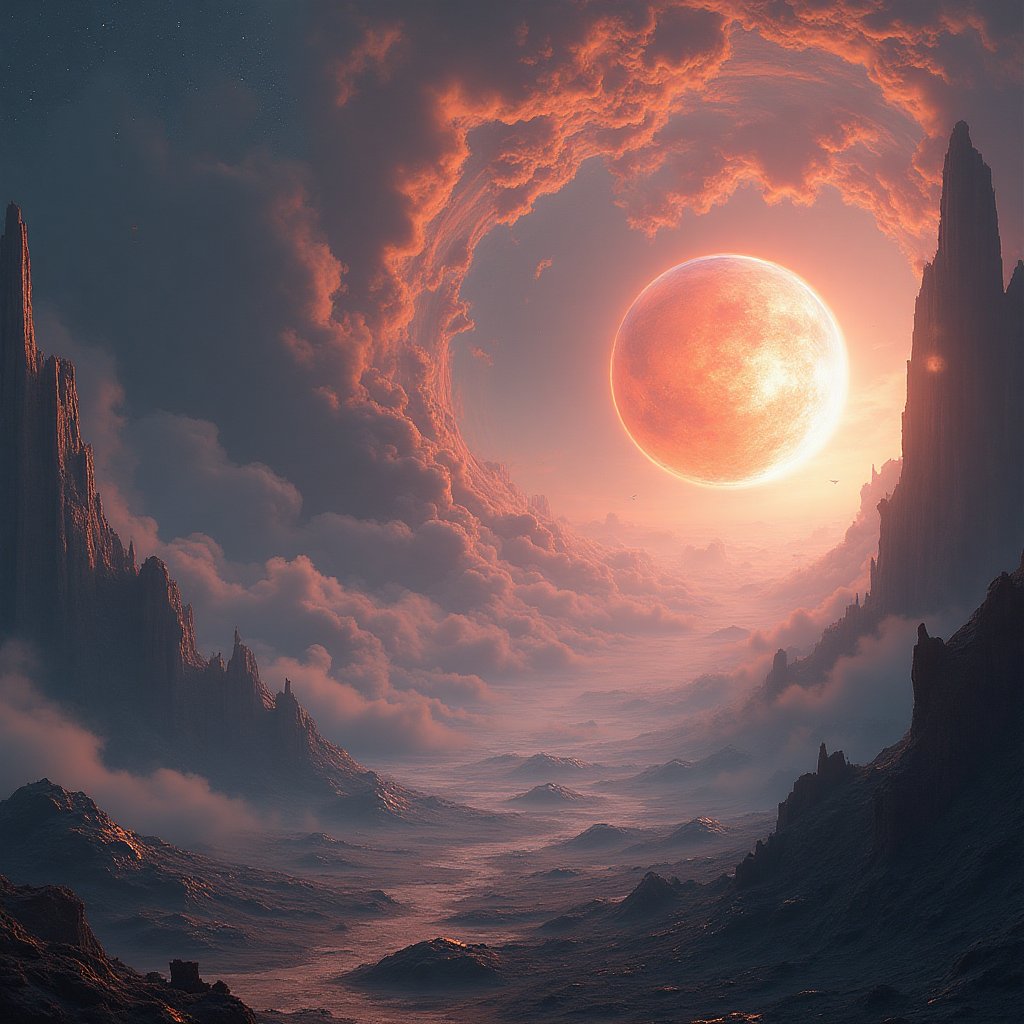
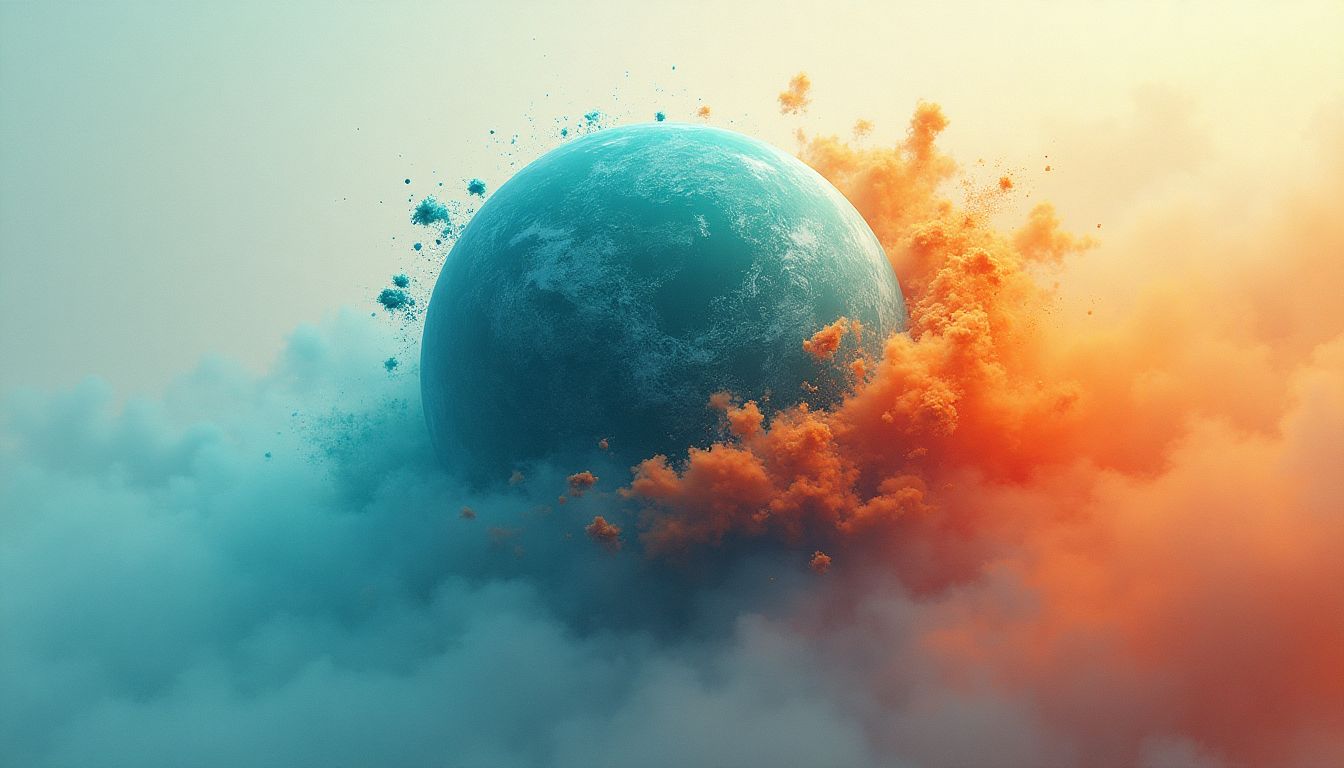
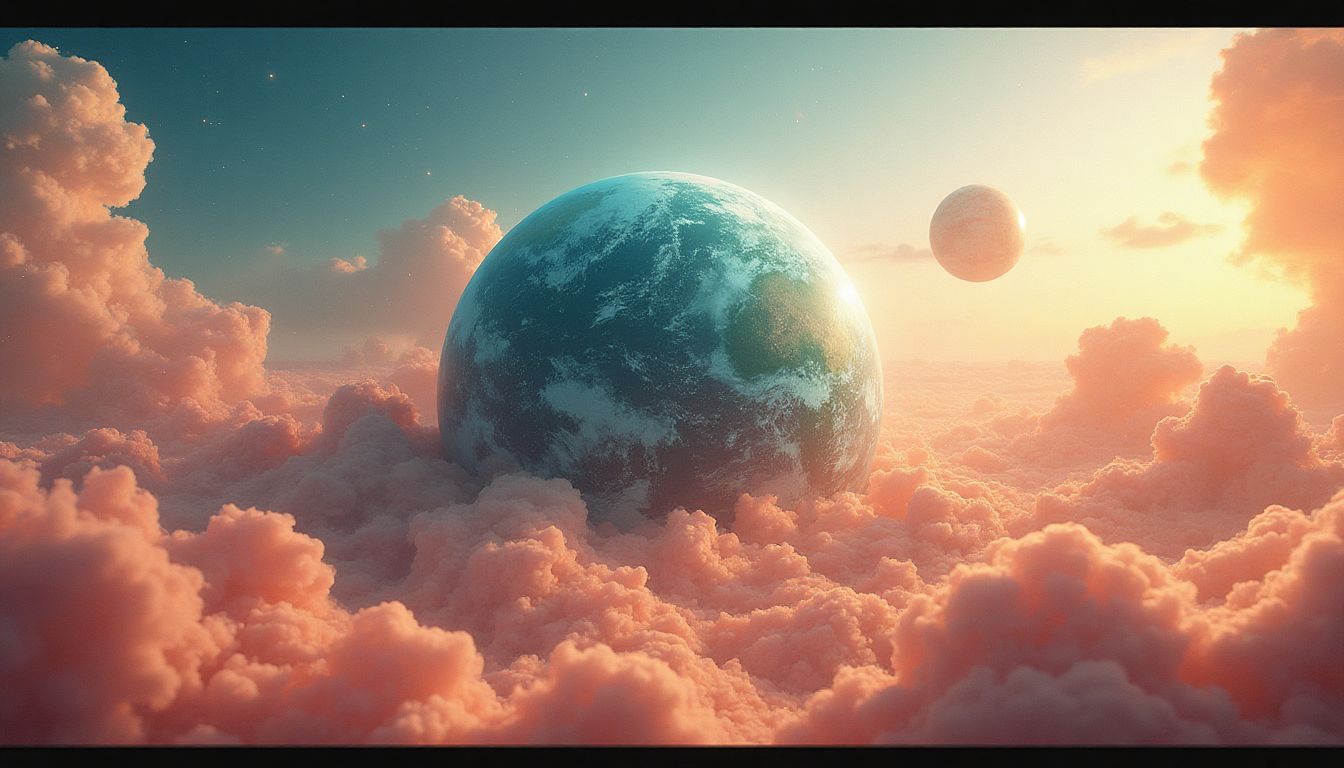
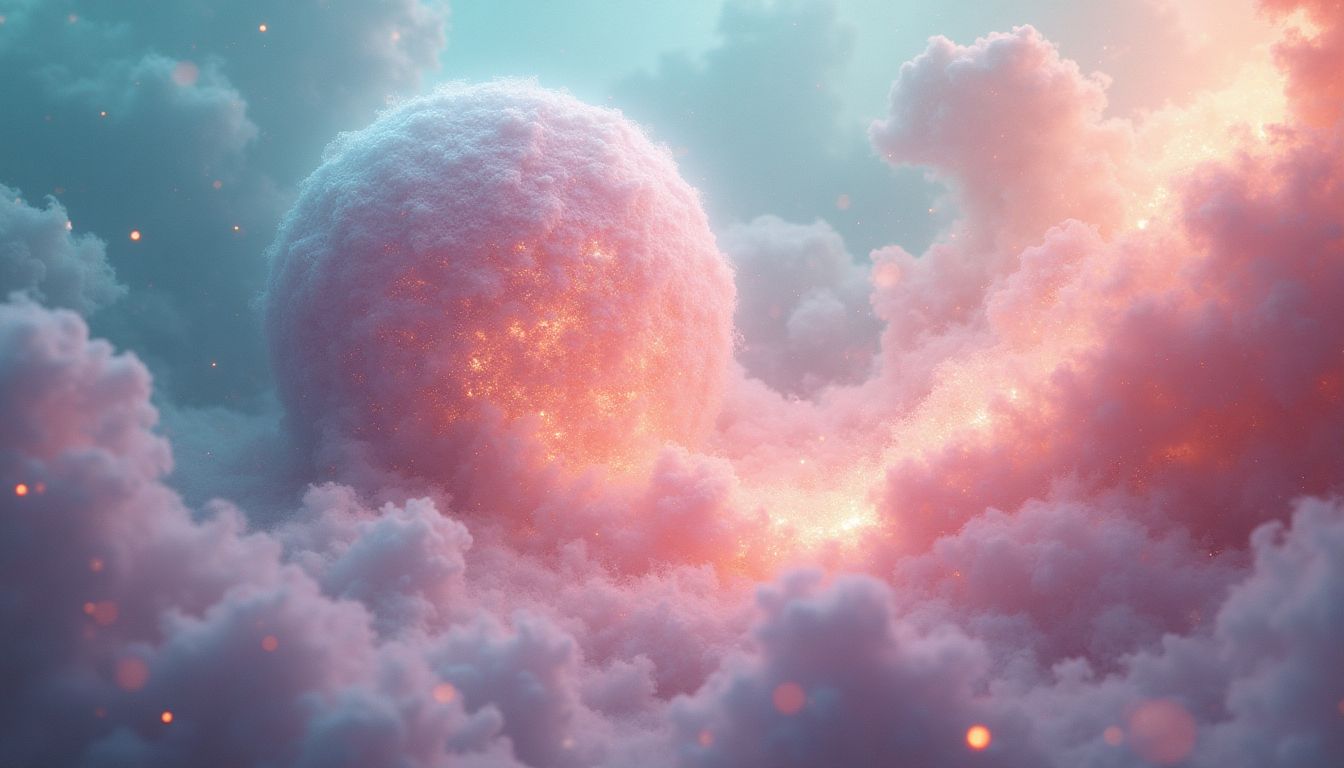


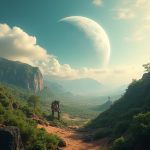

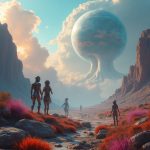
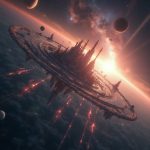
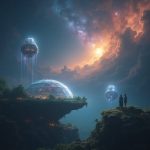
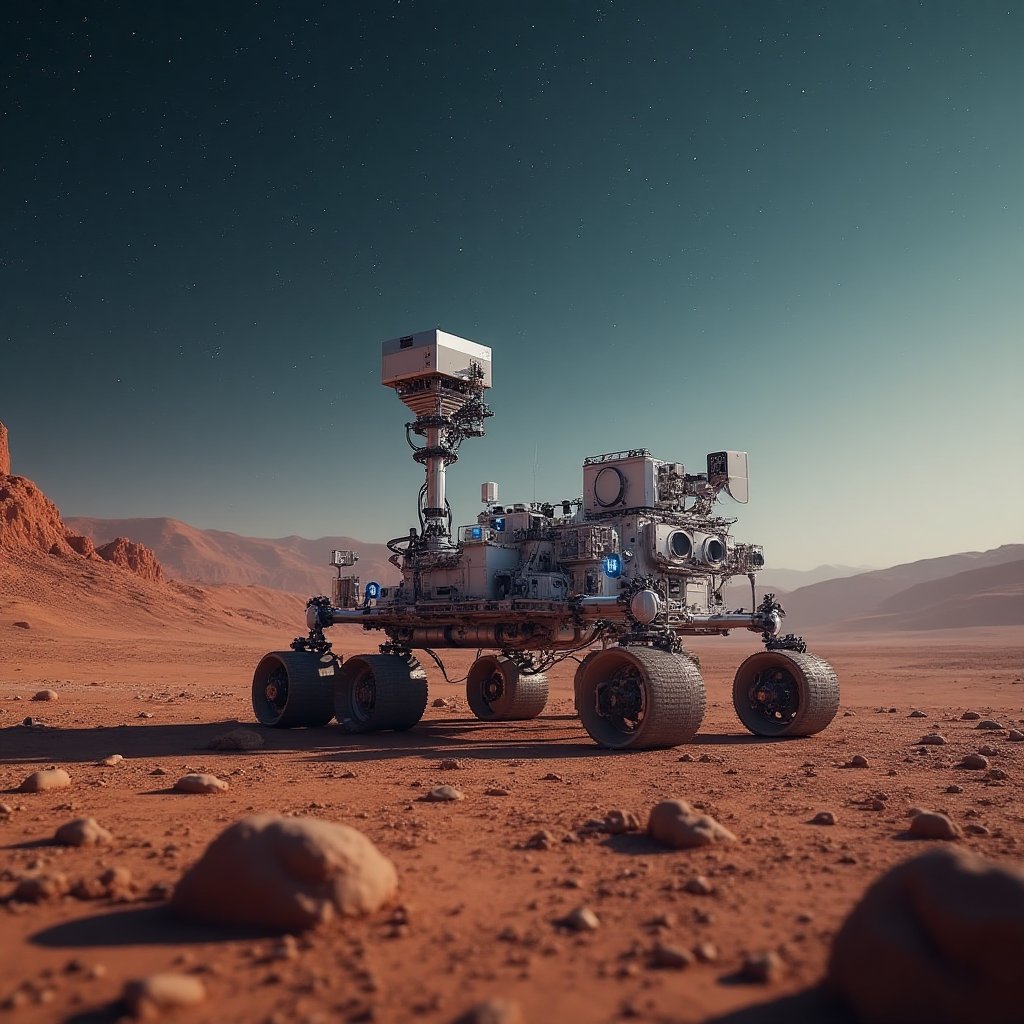
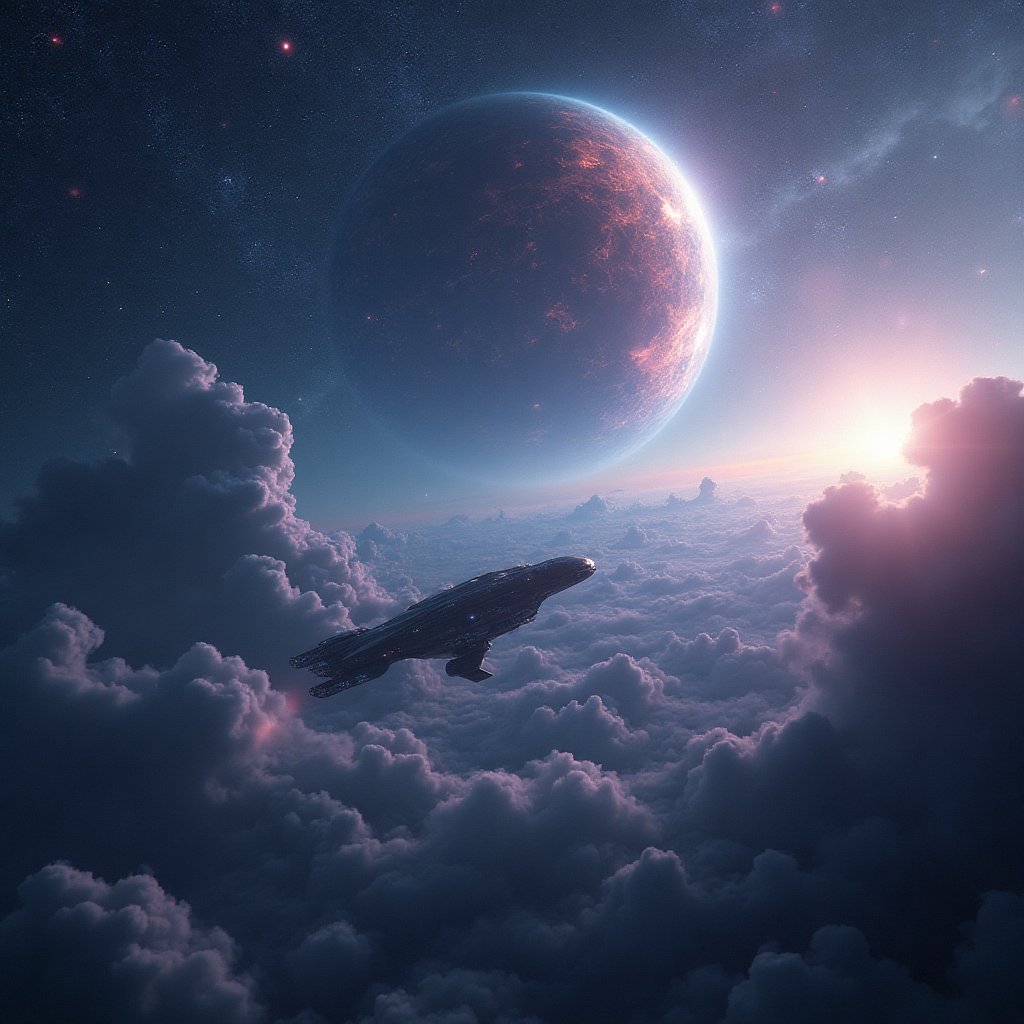
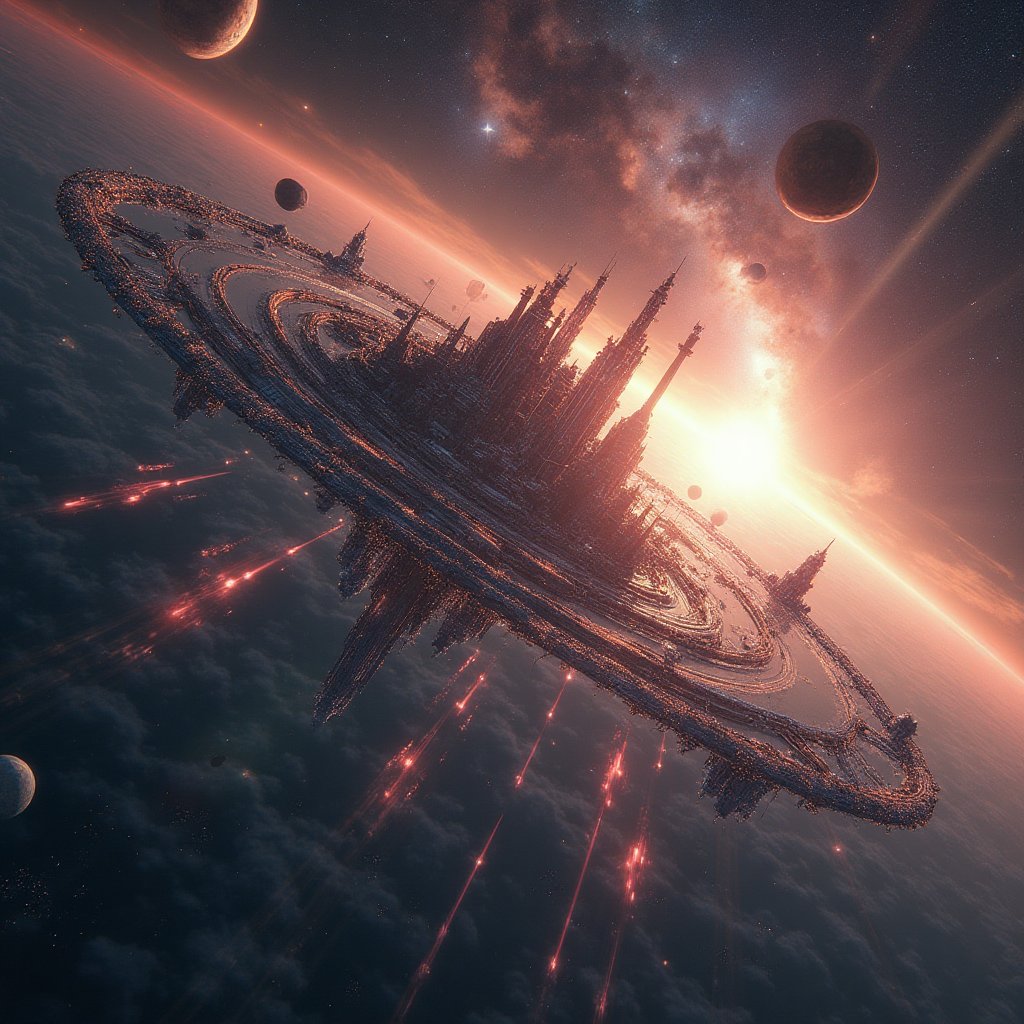















Post Comment
You must be logged in to post a comment.